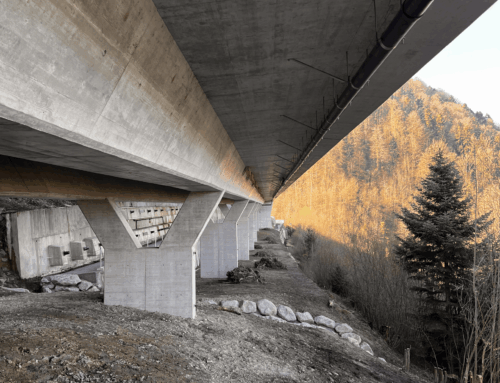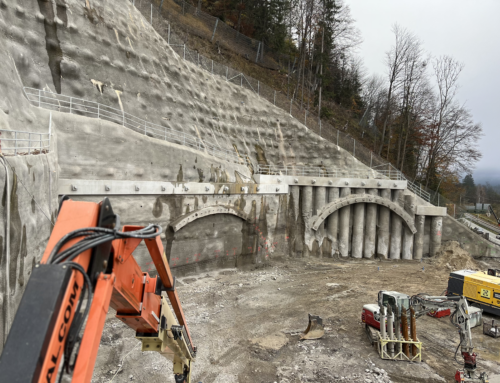Schilthorn cable car: monitoring for the steepest cable car in the world
swiss sensor technology
Description of the
The Schilthornbahn 20XX - the steepest cable car in the world - relies on precise monitoring from Enertec Engineering AG. With 78 anchor load cells, we ensure the stability of the tie rods and supports at extreme heights.
The new Schilthorn railway 20XX is an engineering masterpiece and, with its Gradient of up to 160 % a world record. The cable car extends over several sections and leads to a height of 2970 metres above sea level up to the legendary viewing platform Piz Gloria. The project includes not only the modernisation of the existing facilities, but also the construction of new towers and stations in an extremely steep and challenging Alpine landscape.
The Enertec Engineering AG has delivered the anchor load cells to the company Steel tone for monitoring the load-bearing tie rods for all cable car sections. Through the use of 78 high-precision anchor load cells of the type ELC 2000 we continuously monitor the forces acting on the supports and cable deflections. These load cells are of crucial importance for the safe operation of the entire cable car.
Stechelberg - Mürren section: start of the steep section
The first section of the Schilthorn railway runs from Stechelberg at 867 m above sea level to Mürren and already places high demands on the load-bearing capacity of the supports. In this section, columns 1 and 2 were each 12 or 20 ELC 2000 anchor load cells installed. These load cells are used to monitor the prestressed tie rods, which ensure that the supports remain stable even at extreme angles of inclination. 12 load cells were installed at the Mürren valley station.
Special featureThe supports in this section have to withstand extreme loads and tensile forces, which are amplified by the steep terrain and the high safety requirements. The continuous monitoring of these forces ensures that changes can be reacted to in good time.
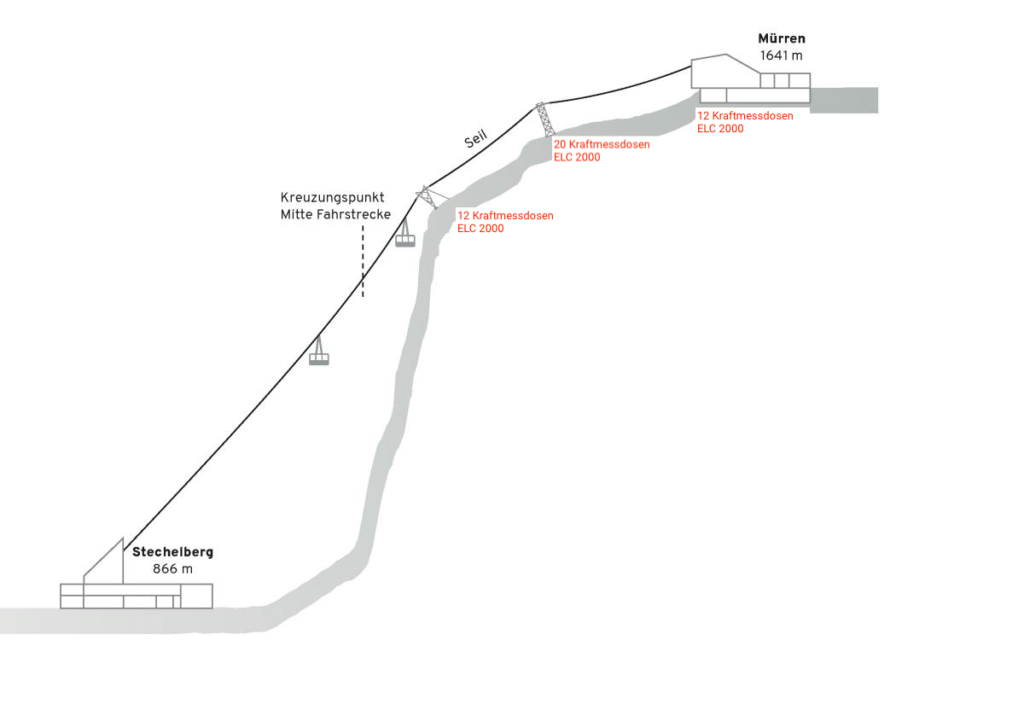
Stechelberg - Mürren route
Mürren mountain station: transition to the high mountain zone
In the Mürren mountain station at an altitude of 1641 metres above sea level were 12 more Load cells ELC 2000 which support the monitoring of the anchoring of the cable deflections. This section marks the transition to the high mountain zone and is characterised by changeable weather conditions and extreme temperature fluctuations.
Special featureThe exposed location and high susceptibility to wind make it particularly important to monitor the anchor forces here in order to ensure the stability of the mountain station and the cable guide. The load cells provide precise data for monitoring and safeguarding.
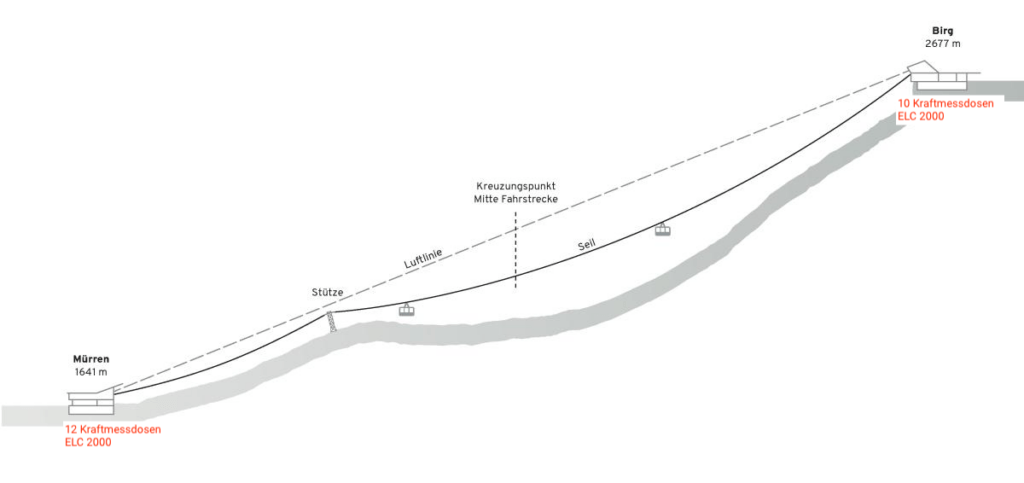
Mürren-Birg route
Birg valley and mountain station: extreme conditions at 2677 metres above sea level.
The valley station and mountain station Birg are located at an altitude of 2677 metres above sea level. 10 force sensors in the bottom station and 12 force sensors in the top station installed. This section is characterised by particularly demanding conditions, as the supports and stations are constantly exposed to wind, snow and temperature fluctuations.
Special featureBirg station is a neuralgic point for the safe operation of the cable car, as it stabilises the forces of the tie rods that guide the gondolas on the steep sections of the route. Precise monitoring by the anchor load cells is crucial in order to withstand the loads caused by extreme weather conditions.
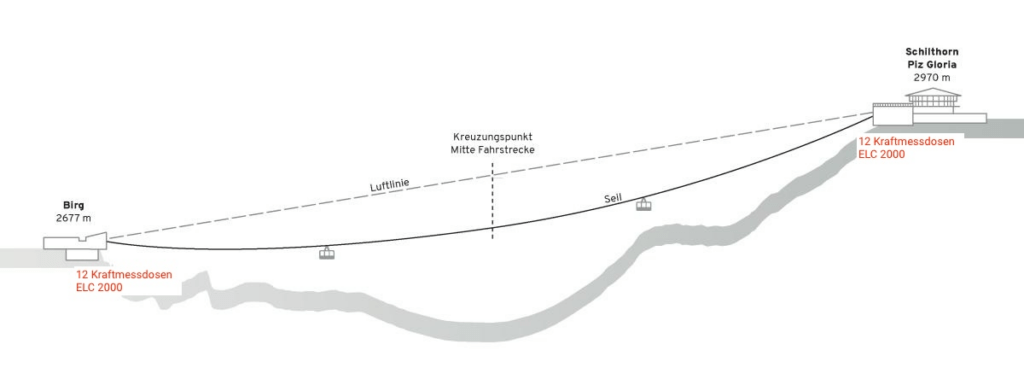
Birg-Schilthorn route
Piz Gloria station: Highest point at 2970 metres above sea level.
The Piz Gloria station at the highest point of the Schilthorn cable car at 2970 metres above sea level is world-famous and well-known from the James Bond film "On Her Majesty's Secret Service". The last section of the cable car was built here with 12 load cells ELC 2000 which ensure the stability of the tie rods for the deflection station.
Special featurePiz Gloria station is not only the highest point of the cable car, but is also exposed to extreme climatic conditions such as strong winds and low temperatures. The anchor load cells monitor the critical forces acting on the station's anchorages, ensuring that the cable car can withstand the extreme weather conditions and can be operated safely at all times.
Our services and their significance for safety
The Enertec Engineering AG has with the Anchor load cells type ELC 2000 We have provided a customised solution for monitoring the tie rods. Our measurement systems are able to detect even the smallest changes in anchor force at an early stage, which is crucial for the stability of the entire cable car structure. Continuous data monitoring enables engineers to react to changes in the anchors and make adjustments where necessary to ensure passenger safety and the longevity of the installation.
Contact us for customised monitoring solutions
Whether steep cable cars, extreme weather conditions or challenging construction projects: Our force measurement systems offer maximum precision and reliability. Would you like to find out more about our monitoring technologies?
Contact us now for more information!







